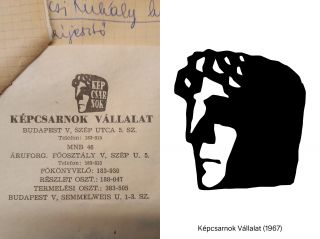GRÓF Ferenc – GYENES Zsófia: (Dis)organigram – State Gallery Company, 2022
130 x 190 cm, hand-stitched carpet
After the Hungarian private sector and retail trade were brought under state ownership between 1948 and 1950, the commercial trade of contemporary artworks also came under state control. In 1952, for the purposes of selling the works of its contemporary artist members, the Art Fund of the Hungarian People’s Republic established the Gallery Company (Képcsarnok Vállalat), with its own exhibition space (several in Budapest, and one in nearly every large city in Hungary). Until the 1980s, the Gallery Company monopolised the Hungarian Art world. The Gallery Company held regular solo exhibitions and other art events at its venues, and had weekly jury panels for evaluating and purchasing the submitted works of its members. From the 1970s onwards, the Gallery’s operations were subject to considerable criticism: it was continually losing money and a significant proportion of the artworks it had purchased from its members were never sold to a third party.
Despite several attempts at market-oriented reform, after the change of regime, the Gallery Company was split into several parts with its real estate and art assets reorganised into a limited liability company (Kft.), which continued to operate until 2013, mainly supporting itself through the maintained circulation of artworks in its exhibition spaces located in the centre of Budapest.
Logo designed by ZOLTÁN TAMÁSSI


